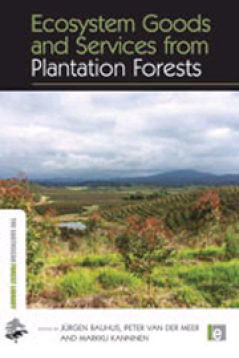Edition
Ecosystem goods and services from plantation forests
Peter van der Meer, researcher at Alterra, Wageningen UR and Jürgen Bauhus wrote a book on this subject, asking the timely question to what extent plantations can provide different ecosystem goods and services, how far they can substitute or augment ecosystem goods and services from native forest, and how they may be designed and managed to better consider or optimize the provision of ecosystem goods and services such as provision of habitat, clean water, non-timber forest products etc.

While the total area of forests is declining globally, the extent of plantations is increasing at a rapid rate. In many regions, plantations already comprise an important landscape component. However, plantations often have a negative image. While there are many different types of plantations established for different purposes, the majority have been established with the aim of producing timber and other wood products. Increasingly, plantations are established to meet also other objectives such as land rehabilitation, erosion control, carbon sequestration, control of the water table etc. As native forests disappear or become less accessible, people are becoming also more reliant on ecosystem goods and services provided by plantations, in particular in densely populated areas of the world.
The authors of this book have documented that there is now a large body of knowledge and experience showing that appropriately planned, designed and managed plantation forests can deliver a range of ecosystem goods and services, at both landscape and stand scales. This book has also shown that the benefits and impacts of plantations and their trade-offs are highly context specific. Therefore, the range of impacts and benefits associated with plantation forests, which typically differ from those of other landscape components, need to be assessed, agreed and managed in a landscape context.